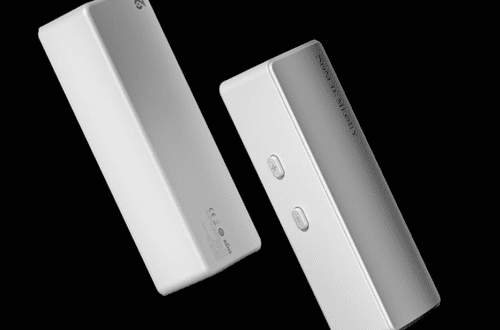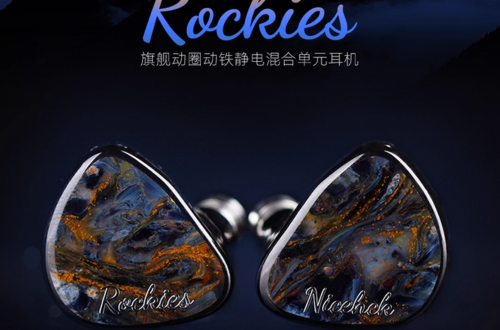HIFI Diary: STAX-X1000 (SRM-270S + X1) Review
I. Preface
Years have passed, and guess what? I bought another STAX electrostatic headphone. If you know me a bit, you’ll know I’m actually a long-time STAX fan. From the 007 all the way to the 009S, I didn’t just play with two full generations of electrostatics, I also listened to pretty much every other electrostatic brand from that time.
But after “retiring” from big headphones, I sold everything and only listened to speakers and in-ears. I honestly thought I’d never consider big headphones again. But then, I recently heard the latest STAX entry-level model, the X1000 set.
Unlike the previous generation (L300/L500/L700) which had headphones covering various entry-level prices, this new STAX lineup only has two models: the flagship X9000 and the entry-level X1.
As an entry-level headphone with a base price roughly 14 times lower than the flagship, I didn’t have high hopes at first. After all, I thought the previous L series was just okay. However, when I actually heard it at the store paired with a D10II, the sound of this new STAX entry-level headphone completely blew me away. Soon after, I decided to buy a big headphone again. This time, I’m really done with the hobby!
II. Preparation for the Review
The system I’m reviewing is the STAX X1000 which includes the SR-272s amp and the X1 headphone. Choosing the test setup for this review was really tough for me.
If you just plug it into a simple dongle DAC, the X1000 set sounds just okay. But if you connect it to my main, high-end system, the sound is amazing. After thinking it over, I decided the X1000 set deserves a better source.
Here are three reasons:
First, its sound quality is so good it can compete with any headphone in the multi-thousand dollar range (around $1400+).
Second, many audiophiles, like me, might not keep super expensive headphones long-term and switch to speakers instead. So, this could be their “endgame” headphone, and their source gear will likely improve over time.
Third, the X1000 set is very sensitive to its surroundings. I tested it, and changing the desk, the isolation feet, or even the power outlet made a noticeable difference. Since the test environment is hard to copy anyway, I might as well use the best setup I have.
So, after a month of testing, here’s the final setup I used:
PC (Started with USB, but switched to network isolation for better sound)
- CPU: AMD 7800X3D
- Motherboard: Gigabyte B650e AORUS ELITE AX
- ATX Power Supply: SAMA XP1000W Wukong Edition
- SSD: Gloway Yi Series Flagship 4TB
- Player: HQPlayer (LNS15/poly-sinc-long-ip/352.8k/NAA)
- Power Cable: BlackWire Power Cable
- Filter: Bada LB5500
Network Isolation
- Switch: Netgear GS105 (MOD: Linear Power Supply + SC-OCXO Clock)
- Ethernet Cable: CelAudio NC100
- Isolation Feet: CelAudio Feet
- Weight: Artesania audio DAMPER
Digital Transport
- Bridge: Accurate N1000
- Power Cable: Venture Grand Ultimate
- Fuse: SR ORGANE
- Isolation: KRYNA D-PROP
- Coaxial Cable: Venture Grand Ultimate
DAC
- DAC: Accurate D1000
- Power Cable: Venture Grand Ultimate
- Fuse: Aucharm Blue
- Isolation: KRYNA C-PROP
- RCA Cable: HUBER SUHNER SF104E
Headphone System
- Amp: STAX SR-272s
- Headphone: STAX X1
- Power: Original Power Supply (with cable)
- Isolation Feet: KRYNA C-PROP
- Weight: Artesania audio DAMPER
The comparison system is my long-time STAX 727II + 009 set. Since the 727II has a PASSBY mode (preamp direct), I used very expensive XLR cables and a preamp for testing. The sound was naturally smoother and more effortless.
III. Assessment Tracks/Scoring Method
The track selection is based on the blogger’s usual listening preferences, which are about 50% ACG music, 30% modern music, and 20% classical music. Therefore, the selection leans heavily towards Japanese music. The scoring criteria are derived from a simplified version of Liu Hansheng’s “Twenty Essentials for Audio,” with a maximum score of 10, though generally, the highest score given is 9. A score of 8 indicates a clear advantage in the scoring category, 7 signifies excellence, 6 means it can be normally appreciated, 5 means it can be normally listened to, and scores below 5 are not commented on. For a more detailed evaluation plan, please refer to here.
IV. Testing Begins
| Item | STAX 270s+X1 | STAX 727II+009 | Trafomatic Audio Primavera+1266PHI |
|---|---|---|---|
| Sound Integrity | 8/10 | 8/10 | 8.5/10 |
| Treble | 8/10 | 9/10 | 8/10 |
| Midrange | 7.5/10 | 8/10 | 7.5/10 |
| Bass | 7.5/10 | 7.5/10 | 10/10 |
| Resolution, Density | 7.5/10 | 8.5/10 | 10/10 |
| Soundstage, Separation | 7/10 | 8/10 | 9/10 |
| Dynamics, Extension | 7.5/10 | 8/10 | 9.5/10 |
| Overall Score | 7.6/10 | 8.1/10 | 8.9/10 |
1. Song: たとえ どんなに… (Tatoe Donna ni…), Artist: Kana Nishino (西野カナ)

Released in 2011 as the lead track of the album with the same name, “Tatoe Donna ni…” is a classic example of 2010s J-Pop. It mixes R&B and Pop rhythms and melodies. The slightly sad drums and bass line throughout the song make it instantly recognizable. Kana Nishino’s voice fits the modern yet warm vibe of the song perfectly. It was a commercial hit, reaching #5 on the Oricon charts and staying there for 23 weeks.
J-Pop is often known for its catchy melodies and great production. “Tatoe Donna ni…” did a great job combining popular elements of the time (R&B) with the Japanese skill for showing subtle emotions. It showed how mature the Japanese J-Pop industry was back then. Sure, this kind of “manufactured pop” might get criticized for sounding too similar or lacking innovation. But at its heart, this song, with its smooth melody and the chorus where Kana Nishino sings almost like she’s shouting, easily captures the deep feelings and determination of a girl in love, which resonated with many.
たとえどんなにどんなに強く / Even if I prayed so, so hard
願ったってもう戻れないけど / I can’t go back anymore
遠い君を見えない君を / But I’ll keep thinking of you
想い続けて / The distant, unseen you
The X1000’s sound right out of the gate was interesting. When I used a direct USB connection to the DAC (not NAA), the vocals felt closer, more like a binaural recording. When I used NAA pushing to the bridge, the vocals moved back a bit, and the sound layers became clearer. At first, I thought this might lose some vocal detail and atmosphere. But after listening many times, I realized NAA gave a really relaxed vocal experience. Even aggressive binaural recordings became very listenable. It didn’t lose any vocal detail but still had good soundstage and density.
No doubt, the X1000’s quality (especially treble resolution) is equal to or even surpasses traditional dynamic flagships (like HD800 series/T1 series). To be more specific, “Tatoe Donna ni…” has a very wide vocal range. The female high notes really test a system’s dynamics and extension. The X1000 does these two things really well. It keeps the traditional STAX strengths: bright, natural treble that lingers beautifully.
And surprisingly, it completely changed the weak bass characteristic of the 009 series with the official amp. While the X1000 still has less bass quantity and shorter decay, the depth and quantity are at a “healthy, enough” level. It’s still a weak point compared to the treble, but compared to the “flawed beauty” of the 009/009S with the official amp, the X1000’s sound style is actually better suited for modern pop music.
While writing this, I had the song on repeat. By the time I finished, I’d listened at least a dozen times and was still enjoying it, my leg tapping along. I think that’s the most direct feedback I can give on the X1000 system.
2. Song: Csikos Post, Artist: Czech Philharmonic String Quartet, Album: Bouquet of Famous Melodies

“Csikos Post” is a Galop dance piece by German composer Hermann Necke. It’s famous for its super fast speed, easy-to-remember tune, and galloping rhythm. It’s been used everywhere since it came out in 1988 – in cartoons, movies, TV shows, games – it’s a really well-known piece of music. It was a huge hit when released and has been arranged in many ways for different groups, performed in concert halls worldwide.
The version by the Czech Philharmonic String Quartet is one of the most famous arrangements/recordings. This chamber music performance, with just two violins, a viola, and a cello, is incredibly clear and accurate. It also manages a dazzlingly high level of balance. The first violin’s melody is clear and bright. The second violin and viola weave together, creating rich layers and solid body for the harmony. The cello provides a strong, bouncy bass foundation, filling out the sound and highlighting the other parts. The four instruments play together with mechanical precision, but the emotion is so rich and the energy so strong, it’s like a group of noble ladies suddenly dancing wildly in front of you. The whole performance is full of life and passion, leaving you feeling energized and happy.
Listening to “Csikos Post” on the X1000, you’ll find yourself naturally turning up the volume. Even at 1 o’clock volume, it doesn’t sound harsh. This shows the X1000 has great control and tuning across the frequencies. While listening, I noticed more than once the recording flaws in the high frequencies of the violin in this old recording. But this doesn’t mean the X1000 sounds like a monitor headphone. Actually, even though I clearly heard the recording flaws, I could still enjoy the music and even ignore them.
This is likely thanks to the X1000’s very smooth and natural musicality. Speaking of this, I have to point out something: if a headphone has both high density and a relaxed feel, it should provide a pleasant listening experience regardless of recording quality. This kind of “all-rounder” quality is something many flagship headphones can’t achieve.
The X1000’s soundstage isn’t huge, but it’s very neat and well-layered, with clear imaging. If you compare it to a standard concert hall for a large orchestra, the X1000’s soundstage is like being on the first floor, maybe rows 6-9, slightly narrower on the sides. It might not be the most exciting spot (like the first five rows), but it’s where you can better appreciate each instrument section.
V. Conclusion
Just so you know, in my scoring system, every 0.5 point is a whole tier of difference. And the higher the score, the more significant each 0.1 point difference becomes. So, it’s not surprising that the 009 gets a full tier advantage over the X1. After all, the price difference is around 3 times.
Regarding the X1’s value for money, even compared to DIY brands, I think it’s absolutely crushing. In the around $700 price range , the X1000 set is in a league of its own for value among everything I’ve heard. And the X1 headphone alone, priced around $380 , offers peak value comparable to traditional dynamic flagships, but at a mid-range price.
But it’s undeniable that without a good source (like STAX’s own D10II), the X1’s sound quality and tone are significantly weakened. Compared to regular dynamic flagships, the X1 is more sensitive to the source. For example, I tried using a TASCAM X8 recorder’s line out to RCA for the X1000 , or using dongle DACs directly to RCA. The sound quality was terrible. In those cases, you’d get a much better experience just buying a dynamic headphone.
So, I recommend that you need a source that costs at least over $700 , or a reliable DIY option over $400 , for the STAX X1000 to perform well and be worth buying. As for using portable electrostatic amps like the D10II, they just barely meet the minimum requirement. If you can, go for a desktop setup.
Also, some friends might ask about comparing it to the previous L series. I think the X1’s quality is better than the L500 but not as good as the L700. However, the soundstage is neater than the L700, the sound is cleaner across all frequencies, and it’s better for different music genres than the L700. At least to me, the L700 feels completely unnecessary.
Of course, new electrostatic users need to know that electrostatic amps only work with electrostatic headphones. For those hoping to start with a small investment and use dongles or regular portable players with line out to RCA for the X1000, the detail loss is just too big. Honestly, I don’t recommend this for people just building their system. Or you could try upgrading the amp. For example, a used STAX SRM-007ta tube amp is around $650 (4.5K RMB) right now, which might be a better option for a new system.
Overall, the STAX X1000 is a great headphone set that reignited my passion for big headphones after years away. It’s energetic and lively, different from the luxurious 007 or the smooth, cool 009/009S series. Like the X9000, it leans more towards R&B and POP styles. This also means STAX, an old HI-END company with decades of history, is making a big move towards modern pop music. And without a doubt, this shift is so successful that it resulted in STAX’s most balanced and highest-value entry-level headphone in the past decade.
The STAX X1000 keeps STAX’s traditional treble strengths while getting its bass as close as possible to the level of most regular dynamic headphones. To be honest, slightly extending the bass decay to boost density and body is a bit of a trick. This does mean the bass resolution is a bit lower compared to the mids and highs, and it’s still far from the bass of many excellent planar headphones. But this is definitely the best-sounding bass from STAX in recent times, besides the X9000.
Final Conclusion:
Compared to the terrifying price of the current T8000 + X9000 set (around $10,000), the X1000 is undoubtedly STAX’s highest value entry-level headphone in recent years. While it’s “entry-level” for STAX, I think compared to traditional dynamic flagships like the HD800s, HD820, T1 III, T5, K812, etc., it has a near-crushing advantage in treble/mid resolution and density. Compared to multi-thousand dollar planar headphones like the NAN7, HEKv2, LCD-X, it’s competitive in resolution and density, and keeps its treble advantage. The main weakness is the bass.
The X1000’s strengths and weaknesses are very clear, and I think I’ve explained them pretty directly. Given that the X1000’s price is in a completely different league than all the headphones mentioned above, I’m giving the official X1000 set a “Strongly Recommended” rating.
So, this very subjective, biased, and opinionated review, full of things I love, is now finished! =W=




